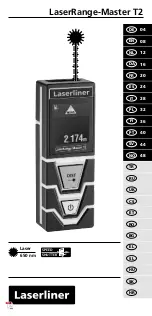
Keysight WLAN Measurement Guide 101
Concepts
Digital Modulation Format Standards
rates of higher-order QAM systems such as this degrade more rapidly than
QPSK as noise or interference is introduced. A measure of this degradation
would be a higher bit error rate (BER).
In any digital modulation system, if the input signal is distorted or severely
attenuated the receiver will eventually lose symbol lock completely. If the
receiver can no longer recover the symbol clock, it cannot demodulate the
signal or recover any information. With less degradation, the symbol clock can
be recovered, but it is noisy, and the symbol locations themselves are noisy. In
some cases, a symbol will fall far enough away from its intended position that it
will cross over to an adjacent position. The I and Q level detectors used in the
demodulator would misinterpret such a symbol as being in the wrong location,
causing bit errors. QPSK is not as efficient, but the states are much farther
apart for a given power and the system can tolerate a lot more noise before
suffering symbol errors. QPSK has no intermediate states between the four
corner-symbol locations, so there is less opportunity for the demodulator to
misinterpret symbols. QPSK requires less transmitter power than QAM to
achieve the same bit error rate.
















































